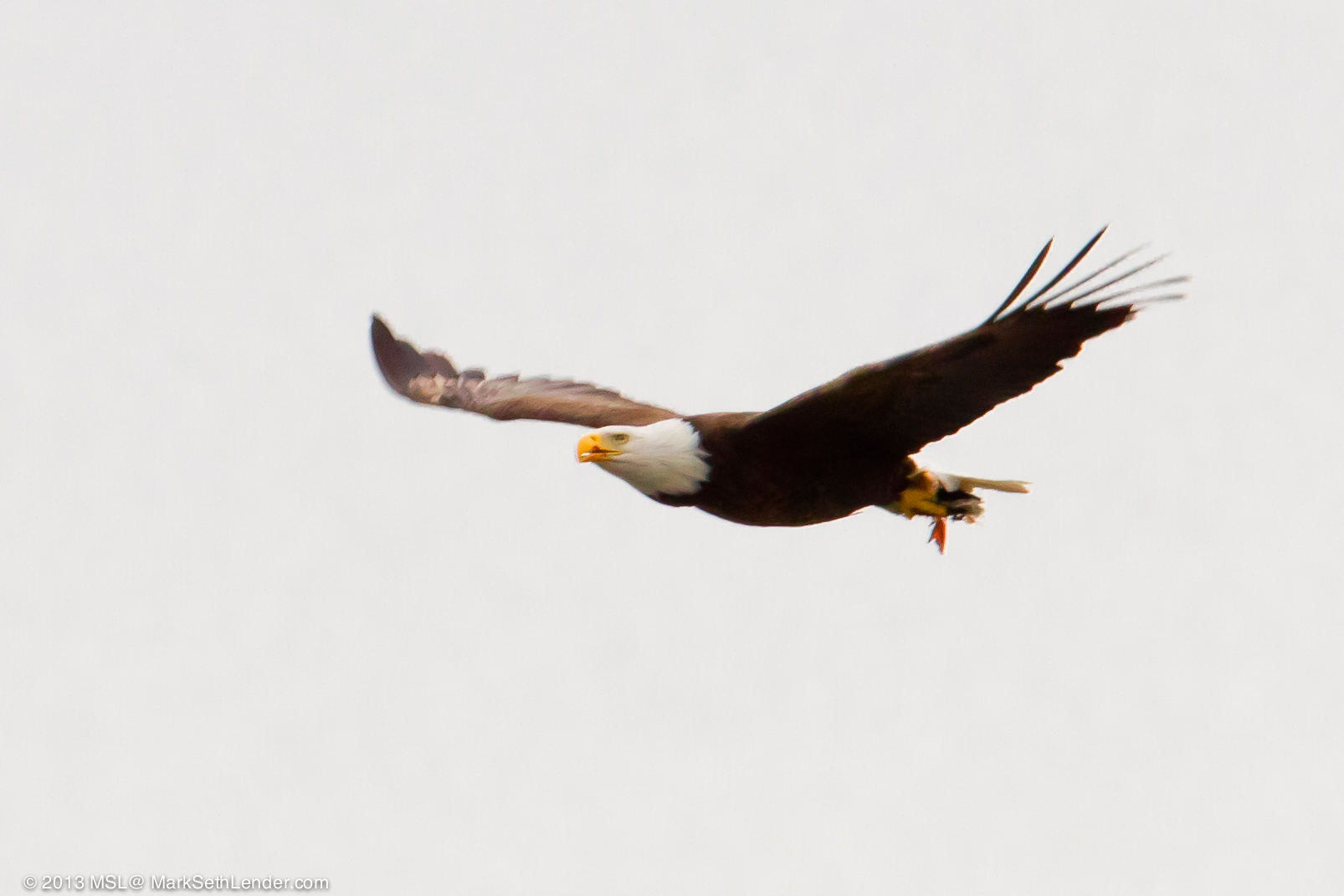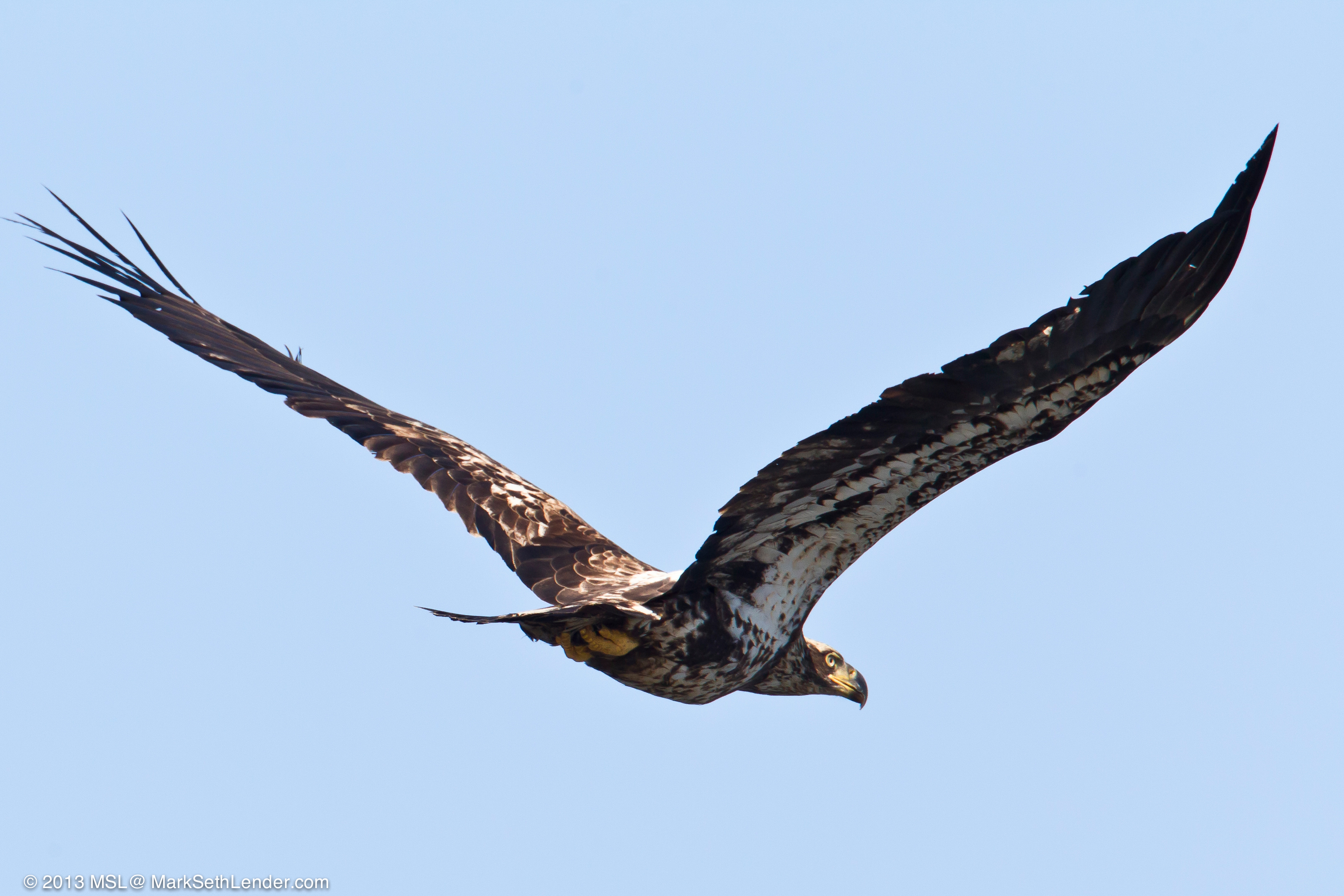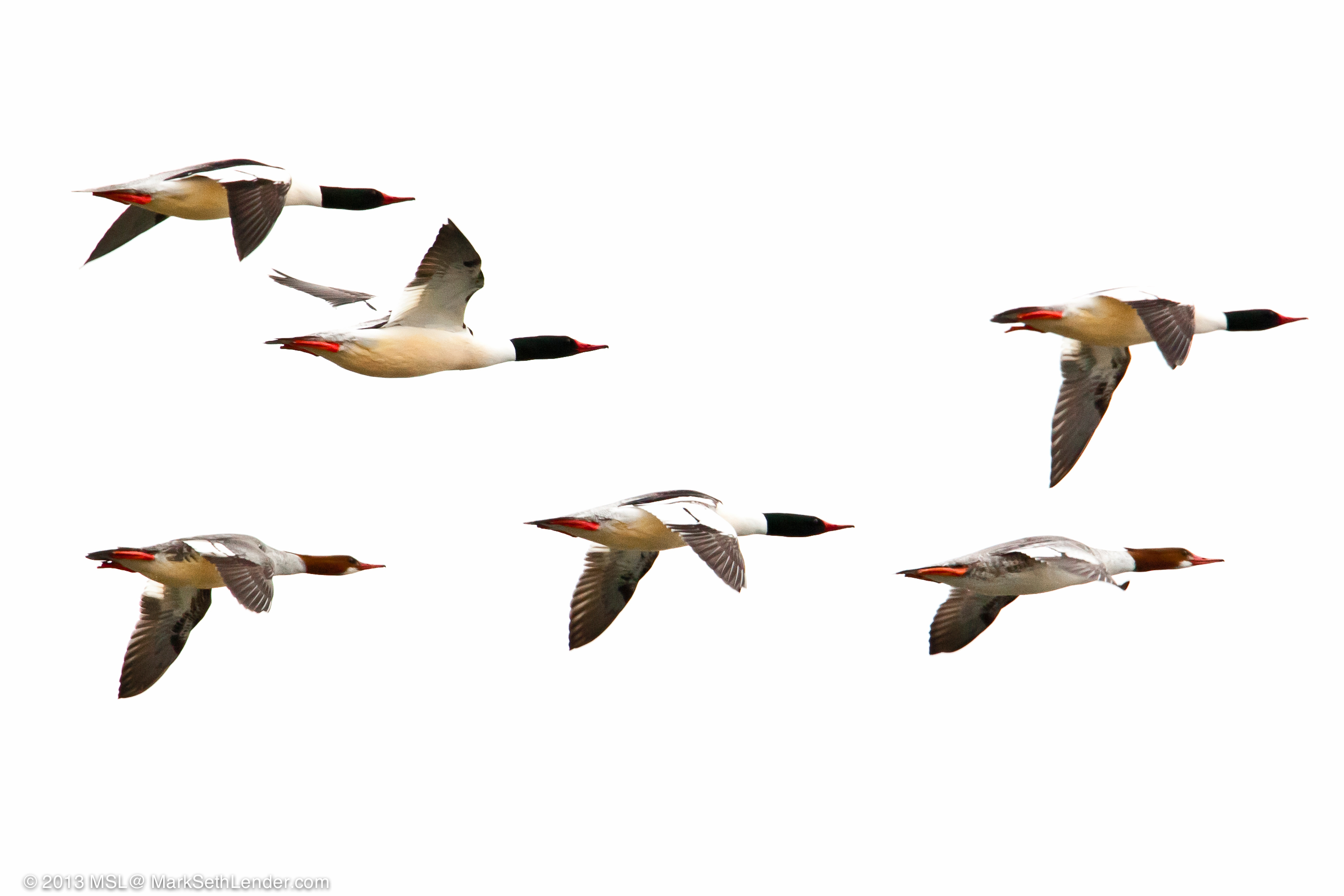Bald Eagles on the Connecticut River
Air Date: Week of March 22, 2013

An Adult Bald looks Mark Seth Lender in the eye. (photo: Mark Seth Lender)
The Connecticut River is one place Bald Eagles gather to catch fish, but as writer Mark Seth Lender observed, they sometimes find other prey.
Transcript
CURWOOD: The American Bald Eagle prefers to eat fresh-caught fish. And in winter, when the upper reaches of the Connecticut River freeze over, the eagles move south in search of open water. To get a good view of these iconic birds requires a good boat, and a good captain, says writer Mark Seth Lender, who found both on the Connecticut River, aboard the Riverquest - and plenty of eagles as well.

2-Juvenile-Eagles,-8-Mile-Bar-DSC_3614.jpg
LENDER: Under clouds like a lead yoke, sun rises over sea smoke, painting color on the sky. Up the river over ice floes, at the bloom of the dawn rose, bald eagles rub their eyes. In their cold perches on the dead branches of the riverside hemlocks, in the red raw hour as the day flowers they are hardly alive. Not a talon reaches. Not a wing stretches. Not a sparrow flies.

A lone juvenile eagle scans the horizon (photo: Mark Seth Lender)
This was a rich place once, Connecticut River Salmon and Sturgeon, Shad and Menhaden racing against the tidal flow. In that time, up where the coves creep down and the River narrows, from salt to sweet, over falls and shallows salmon spawned and died, while the great Atlantic sturgeon used to glide sowing seed to the River for a century and more.

Adult bald eagle with a Merganser foot trailing from its talons. (photo: Mark Seth Lender)
Silent giant oak and tall pine in galleries along the riverside held the banks upright. We felled them for our ships. Astride the great stream, we quarried the islands, carved them like carcasses to ballast those ships in granite blocks grey as tomb stones. We reaped the fish with mile wide nets (billowing shadows of the Shadow of Death) and when there was nothing but emptiness we ground the last of the herring down to feed, and to fertilizer for our corn rows.

Juvenile bald eagle in flight (photo: Mark Seth Lender)
But the eagles know none of this. Care for none of this. Two fathom wide of wing spread between them, the Young Princes prance upon the sands of 8 Mile Bar. While above them, determined and speeding, the white head gleaming, her gunmetal talons long as a Bengal tiger’s claw, there she flies, Queen of the Air! And trailing behind her in her gnarled and yellow grip where the scales and the flailing tails of fishes belong is instead the webbed foot of a merganser, fresh killed. Red as murder.

Common Mergansers in flight (photo: Mark Seth Lender)
CURWOOD: Mark Seth Lender is the author of Salt Marsh Dairy, A Year on the Connecticut Coast. For the photos he took of our national bird, head on over to our website, LOE.org.
Links
Living on Earth wants to hear from you!
Living on Earth
62 Calef Highway, Suite 212
Lee, NH 03861
Telephone: 617-287-4121
E-mail: comments@loe.org
Newsletter [Click here]
Donate to Living on Earth!
Living on Earth is an independent media program and relies entirely on contributions from listeners and institutions supporting public service. Please donate now to preserve an independent environmental voice.
NewsletterLiving on Earth offers a weekly delivery of the show's rundown to your mailbox. Sign up for our newsletter today!
 Sailors For The Sea: Be the change you want to sea.
Sailors For The Sea: Be the change you want to sea.
 The Grantham Foundation for the Protection of the Environment: Committed to protecting and improving the health of the global environment.
The Grantham Foundation for the Protection of the Environment: Committed to protecting and improving the health of the global environment.
 Contribute to Living on Earth and receive, as our gift to you, an archival print of one of Mark Seth Lender's extraordinary wildlife photographs. Follow the link to see Mark's current collection of photographs.
Contribute to Living on Earth and receive, as our gift to you, an archival print of one of Mark Seth Lender's extraordinary wildlife photographs. Follow the link to see Mark's current collection of photographs.
 Buy a signed copy of Mark Seth Lender's book Smeagull the Seagull & support Living on Earth
Buy a signed copy of Mark Seth Lender's book Smeagull the Seagull & support Living on Earth

